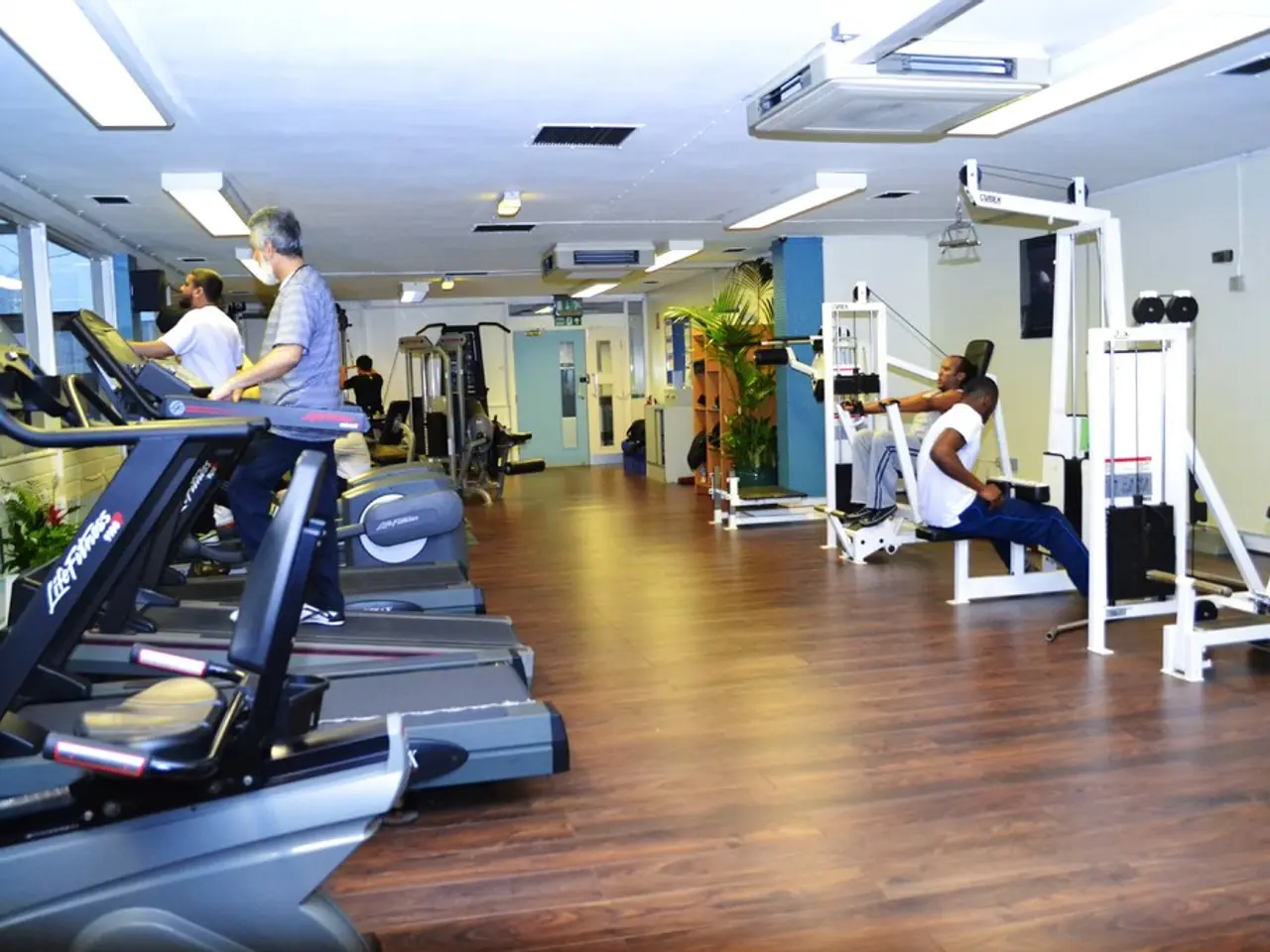Ab Training Methods Favoring Deep Core Exercises Now, Claimed to Yield Optimal Abs Results - 9 Exercises for a Defined Waistline
=========================================================
Engaging and strengthening the deep core muscles is essential for maintaining good posture, reducing the risk of lower back pain, and enhancing overall movement and stability. Here are some beginner-friendly exercises that focus on controlled, static, and slow movements to improve core stability without strain.
Forearm Plank
The forearm plank is a simple yet effective exercise that engages the entire core, including the transverse abdominis, obliques, lower back, glutes, and thighs. To perform a forearm plank, hold a push-up position with your forearms on the floor, contracting your abs, obliques, lower back, glutes, and thighs, and keeping your body in a straight line for about 30 seconds.
Dead Bug Hold
The dead bug hold is excellent for core control without causing neck or back strain, making it suitable for beginners and postnatal recovery. To perform the dead bug hold, lie on your back with your arms up and knees bent at 90°, press your lower back into the floor, and brace your core. Hold for 30 seconds, repeat 2-3 times.
Hollow Hold
The hollow hold is a bodyweight move that works to build maximum core tension and train the entire anterior chain, including the deep core. To perform the hollow hold, lie on your back with your shoulders and legs lifted off the floor, keeping your lower back pressed into the mat. Beginners can modify by bending their knees or keeping their arms by their side. Start with 10-20 seconds and gradually increase.
Side Plank
The side plank targets the obliques and lateral stability. To perform the side plank, lie on your side with your forearm on the ground, feet stacked, and keep your body in a straight line. Hold for 30-45 seconds per side, and complete 3 sets.
Pilates-Based Core Activation
Exercises that emphasize slow, controlled movements, such as core hovers on hands and knees or slow knee taps, help activate deep core muscles safely for beginners. Aim for a 5-8-minute routine to activate your deep core muscles effectively.
These exercises focus on core stabilization through isometric holds and slow controlled movements, which are effective for activating deep muscles like the transverse abdominis and erector spinae while minimizing strain. Beginners should focus on proper form, maintaining breathing, and gradually increasing hold duration or repetitions.
| Exercise | Description | Duration/Reps | Benefits | |-------------------|----------------------------------------------|-----------------------------|-------------------------------------------| | Forearm Plank | Hold forearms on ground, body straight line | Hold 30 seconds | Engages entire core stability | | Dead Bug Hold | Lying supine, bracing core, limbs raised | Hold 30 seconds, 2-3 sets | Core control, safe for beginners | | Hollow Hold | Shoulders/legs lifted, back pressed to floor | 10-45 seconds | Deep core engagement, functional strength | | Side Plank | Forearm side support, body aligned | 30-45 seconds per side, 3 sets| Targets obliques and lateral stability | | Pilates Core Activation | Slow controlled movements on hands/knees | 5-8 minutes routine | Deep core activation and stability |
Focusing on these exercises with controlled breathing and gradual progression will effectively build and strengthen deep core muscles for beginners.
Read also:
- Is it advisable to utilize your personal health insurance in a publicly-funded medical facility?
- Dietary strategies for IBS elimination: Aims and execution methods
- Benefits, suitable dosage, and safety considerations for utilizing pumpkin seed oil in treating an overactive bladder
- Harmful Medical Remedies: A Misguided Approach to Healing








